Праздник любования луной ещё имеет также названия «Фестиваль луны Цукими» или «Праздник середины осени». Его японское название «Tsukimi» переводится как «Просмотр луны». Это не удивительно, так у японцев принято «любоваться окружающим миром». Это и, известное на весь мир, любование цветами сакуры (О-Ханами), а также — любование снегом в горячем источнике (Юкими онсен). Вообще, у японцев вошло в привычку сидеть вместе и любоваться приметами уходящих сезонов. Прочитав статью, вы узнаете историю Праздника любования луной (Цукими), а также познакомитесь с традициями этого необычного праздника.
1. Сказка о кролике на Луне
Считается, что праздник любования луной появился благодаря одной фольклорной сказке о кролике на Луне. Эта история известна не только в Японии, но и в Китае. В таком виде она дошла до наших дней.
Однажды лунный старец спустился на Землю, чтобы испытать доброту трёх друзей — животных (обезьяны, кролика и лисы). Превратившись в нищего, лунный старик захотел узнать, кто из них самый добрый. Он подошел к друзьям, сидевшим у костра, и спросил, нет ли у них лишней еды. Обезьяна собрала много фруктов для нищего. Лис принёс человеку рыбу.
Но кролику нечего было дать, и он предложил принести себя в жертву голодному человеку. Он хотел броситься в костер из зажариться на нём, чтобы нищий поел. Но прежде чем кролик успел это сделать, нищий снова стал лунным старцем. Он сказал, что кролик — очень добрая душа, и взял его с собой на Луну.
Эта история, передаваемая из поколения в поколение, соответствует старому японскому убеждению, что «кролики пришли с Луны». В современном высокотехнологичном мире все тайны, которые когда-то были связаны с Луной, уже давно раскрыты. Тем не менее, полная осенняя Луна всё ещё вызывает чувство радости и удивления у японцев. Когда японские люди смотрят на Луну, они видят форму кролика и верят в «сказку».
2. История праздника любования луной (Цукими) в Японии
Праздник любования луной (Цукими) начал отмечаться очень давно. Фестиваль, как говорят, праздновался сначала в период Нара (710-794 гг. н. э.).
Ещё в те времена восьмой солнечный месяц (соответствующий сентябрю по современному Григорианскому календарю) был лучшим временем для того, чтобы смотреть на Луну. Это связано с тем, что относительное положение главных светил в сентябре «заставят Луну» казаться особенно яркой.
Однако только в период Хэйан (794-1185 гг.) Цукими стал популярным среди аристократов, которые восхищались отражением Луны в воде. Японская придворная знать праздновала Цукими, проводя щедрые банкеты на лодках или рядом с прудом, который отражает лунный свет. Праздник сопровождался музыкальными и поэтическими выступлениями, посвящёнными ночной небесной красавице.
С окончанием периода Хэйан празднества не закончились. До 1683 года по японскому календарю его отмечали в полнолуние, которое приходилось на 13-й день каждого месяца. Однако в 1684 году календарь был изменен таким образом, что новолуние приходилось на первый день каждого месяца, а полнолуние — на пятнадцатый.
В то время некоторые люди в Эдо (современный Токио) перенесли празднование Цукими на 15-й день месяца, другие продолжали его отмечать на 13-й день. Кроме того, в некоторых частях Японии в 17-й день месяца проводились различные региональные обряды, а также буддийские обряды. Некоторые японцы использовали их, в качестве предлогов для частых ночных вечеринок осенью в течение всего этого периода. Этот обычай был быстро прекращен в период Мэйдзи…
Прочитать кратко об истории Японии можно по ссылке ниже:
Читать статью: «Национальные праздники Японии»
3. Традиции Праздника любования луной (Цукими) в Японии
Праздник любования луной (Цукими) в Японии сохранился до нынешнего времени. Цукими означает «просмотр Луны» на японском языке. Согласно лунному календарю, Луна наиболее красива около 15 сентября, когда она находится в самом полном виде и ближе всего к Осеннему равноденствию. Однако каждый год дата празднования меняется, так как она вычисляется по лунному календарю. Например, В 2018 году Цукими отмечался 24 сентября.
В настоящее время праздник,конечно, несколько изменил свою трактовку. Современный праздник Цукими — это не только «любование луной». Это день выражения благодарности и признательности природе за её дары. Поэтому луну в это время ещё называют «Урожайной луной». Также не случайно Цукими называют Праздником середины осени или Осенним фестивалем урожая.
Японцы празднуют Цукими со своими семьями, наблюдая за Луной и наслаждаясь сладостями Моти или Цукими данго. Есть более чем 10 видов Моти. Но те, которые едят в ночь Цукими должны быть особенными! Другие популярные продукты на Цукими: каштаны, тыква, бобы, также саке.
Комнату обычно украшают зерновыми культурами, а также сусуки, японской пампасной травой или серебристой травой. Пампасная трава когда-то использовалась японцами для соломы крыш и кормления животных. Говорят, что она отгоняет плохих духов, и её обычно ставят в вазу у входной двери. Японские мужчины верят, что серебряная трава защитит дом от зла. Она также служит в качестве приношения Богу Луны.
Просмотр Луны является торжественным и тихим делом. Возможно, на это влияет прохлада ночного ветра, ставшего ещё холоднее с переходом с лета в осень. Или, может быть, это глубокое, необъяснимое чувство тоски, которое люди испытывают, глядя на мучительно красивое сияние луны.
В японском языке существуют специальные термины, обозначающие случаи, когда Луна не видна традиционным осенним вечером. Когда не видно Луну совсем, то это Мугецу. Луна во время дождя — это Угецу. Однако даже когда Луна не видна, проводятся вечеринки Цукими.
В некоторых местах Японии имеются возможности отметить праздник, как в эпоху Хэйан. Например, в садах Йокогаме можно насладиться музыкальными выступлениями под Луной. Здесь можно услышать разнообразную музыку от гагаку (старинную придворную музыку), до выступлений кото (фортепианных и саксофонных исполнений японских песен). Подобные концерты обязательно порадует каждую артистическую душу.
Самые популярные места в Японии во время Фестиваля середины осени — святыни и храмы. Люди одеваются в традиционные костюмы и ходят в храмы, чтобы зажечь благовония (джоссы), поблагодарить природу за хороший урожай и попросить о счастье. Почти в каждой святыне Японии проводится большое представление, состоящее из традиционных песен и танцев. А некоторые из них даже проводят экстравагантный парад.
Какова бы ни была причина, наслаждаться фестивалем Цукими в Японии — это чудесный «романтический опыт», который нельзя пропустить!
Вот так отмечается праздник любования луной в Японии!
Читайте также:
Праздник середины осени в Китае
Праздники Японии
Праздники и фестивали разных стран мира
Уважаемые читатели! Пишите комментарии! Читайте статьи на сайте «Мир праздников»!
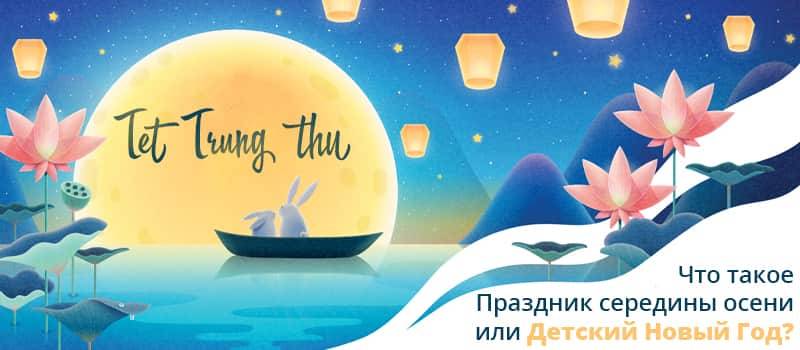
Время праздновать — Лунный фестиваль
24.09.2020
Здравствуйте, дорогие друзья!
Вспомните, пожалуйста — были ли у Вас в детстве “праздники для маленьких”?
В России и Европе это Колядки, когда в ярких костюмах дети и взрослые ходили по округе, исполняли песни или театральные зарисовки, получая при этом угощение от хозяев дома.
В Америке (Северной и Южной) это Хэллоуин и День мертвецов, когда семьи собираются вместе, вспоминая ушедших родственников, а детки в страшно-смешных костюмах ходят по домам и просят угощения.
В Азии тоже есть свой традиционный, самобытный праздник, второй по важности после Нового Года.
Праздник середины осени или, по вьетнамским традициям, Детский Новый год
Называется Праздник Середины Осени (Mid Autumn Festival), Фестиваль Детей или Лунный фестиваль, «Тет Чунг Тху» — Tet Trung Thu.
Он празднуется на 14-15 день восьмого месяца лунного календаря. Чаще всего это полнолуние или один-два дня до или после него. Осенью в Азии малооблачно, спадает жара и поэтому за луной так приятно наблюдать.
В 2021 году Праздник середины осени пришелся на 21 сентября.
В каждой азиатской стране свои нюансы этого мероприятия, но что их точно объединяет — традиция родственников собираться за одним столом в этот вечер, лунные пироги и много-много светящихся цветных фонариков на улице.
Не зря главный символ Фестиваля (а символика крайне важна для азиатских стран) — полная луна. Она символизирует воссоединение, целостность и достаток в доме.
Как появился Детский новый год?
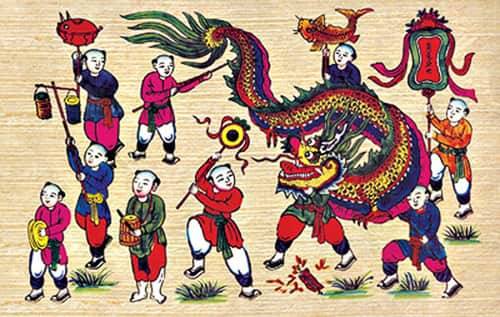
Происхождение Лунного праздника окутано множеством легенд — и китайских и вьетнамских — которые плотно переплетены друг с другом, и непонятно — какая из них на самом деле положила ему начало.
Корни праздника уходят далеко в историю — примерно в 12 веке начались первые упоминания о нем. По мнению археологов, Фестиваль середины осени во Вьетнаме восходит к древним временам и был напечатан на лицевой стороне бронзового барабана Нгок Лу.
Согласно эпитафии пагоды Дои в 1121 году, со времен династии Ли, в Тханглонге (Ханой) официально проводился Фестиваль середины осени с гонками на лодках, водными куклами и легкими процессиями, после случая, когда король Ли хотел поблагодарить Бога Дракона за дождь для богатого урожая и процветания народа.
Но самая известная история — о человеке по имени Куи (Cuội), который держался за волшебное баньяновое дерево (фикус), когда оно взмывало на Луну. Если Вы внимательно посмотрите на полную луну, вы увидите тень человека, сидящего под деревом.
В ночь на Праздник середины осени дети выставляют на шествие фонари на улицах, чтобы осветить путь на землю для Куи с луны.
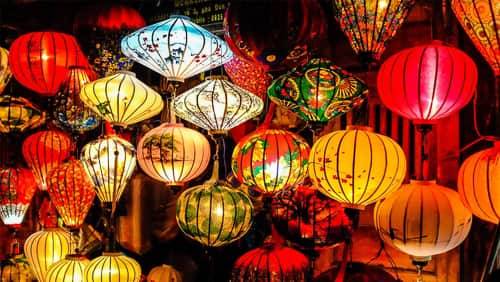
А причем здесь кролики?
Нефритовый кролик — также широко распространенный персонаж, связанный с Праздником середины осени и луной. Китайцы и Вьетнамцы считают, что нефритовый кролик — спутник Чанъэ (богиня красоты) на Луне.
А история о кролике была такая…
В лесу жили лисица, кролик и обезьяна. И были они большими друзьями.
Однажды Небесный Император захотел испытать достоинства животных. Он сошел на Землю в образе старца.
Он сказал: «Я слышал, что вы трое — хорошие друзья, поэтому я проделал долгий путь, чтобы познакомиться с вами. Теперь я очень голоден. Не могли бы вы дать мне поесть?»
«Пожалуйста, подождите здесь. Мы скоро вернемся с едой». И трое животных разошлись в поисках пищи. Лисица поймала рыбу в реке; обезьяна нашла в лесу немного фруктов; а кролик ничего не нашел и вернулся ни с чем.
Старец сказал: «Кажется, вы трое не так уж и дружны, раз работаете в одиночку. Вы двое сдержали свое обещание и принесли еду. Но кролик ничего не принес».
Кролику было так жаль, что он молвил: «Пожалуйста, помогите мне достать дров. Я хочу приготовить для старца немного еды», — сказал он лисе и обезьяне.
После того, как животные подожгли дрова, кролик сказал стурцу: «Извини, я не выполнил твою просьбу. Но я могу накормить тебя. Съешь меня, пожалуйста!» и кролик прыгнул в огонь.
Император Небес был глубоко тронут этим поступком. Он поднял кролика и сказал: «Чтобы почтить память, я отпущу его в Лунный дворец, чтобы люди могли видеть его вечно».
Вот такая красивая грустная история…
Детский Новый год во Вьетнаме
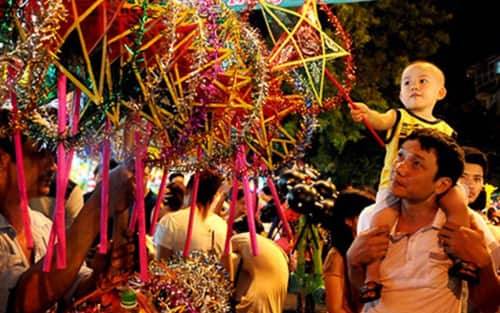
Во Вьетнаме Лунный фестиваль считается детским праздником. Дело в том, что в стране, где в основном все занимаются фермерством, начало осени приходится на сбор урожая. И Лунный праздник — день, когда родителям, бабушкам и дедушкам можно отложить все дела и провести время со своими детьми, подарить им подарки и всячески показать свою любовь.
Также это возможность для всей семьи укрепиться и сблизиться.
Кстати, детей во Вьетнаме очень любят и относятся к ним с огромным уважением.
По этому случаю люди покупают лунные пироги, чай, вино, сладости, чтобы поклониться своим предкам и подарить бабушкам и дедушкам, родителям, учителям, друзьям и родственникам.
Помимо развлечения для детей и взрослых, Фестиваль середины осени также дает людям возможность наблюдать, как луна предсказывает урожай и национальную судьбу. Если осенняя луна желтая — в этом году наступит сезон тутового шелкопряда, если осенняя луна зеленая — произойдет стихийное бедствие, а если осенняя луна будет ярко-оранжевой, страна будет процветать.
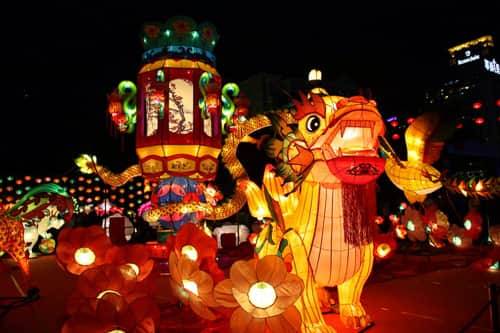
Некоторые традиции празднования
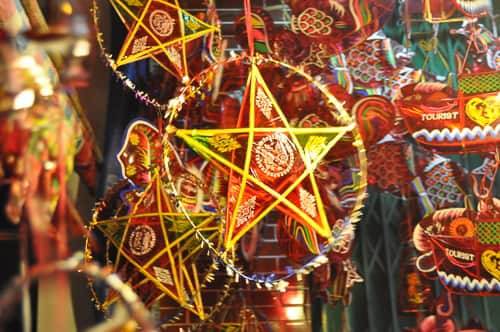
Много ярких фонарей самых разных форм и расцветок, которые весело сияют в золотом лунном свете. Фонари вешают на пороге и символизируют удачу и мир, это выражение семейного счастья и благополучия. Особенно красив Детский Новый год в Хойане, где по реке пускают тысячи фонариков, и это поистине восхитительное зрелище, которое стоит увидеть хотя бы раз в своей жизни).
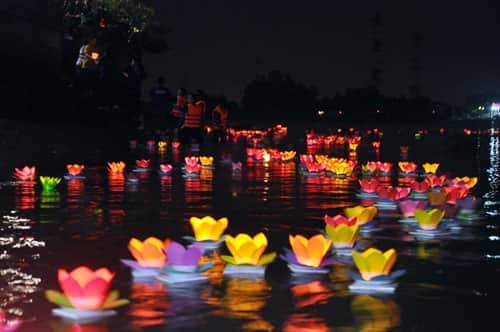
Дети бегают по улицам с фонарями в виде разных животных — слона, лошади, рыбы, креветки, бабочки.
Наблюдение за луной. В этот день все стараются выйти на улицы, занять верхушки холмов или крыши, чтобы понаблюдать за яркой луной. Под ярким лунным светом родители часто рассказывают легенды о дяде Куи, который поднялся на огромном фикусе на Луну.
Подношения. В каждой семье готовят большой поднос, на котором размещают лунные пироги, конфеты (например арахисовые или кокосовые), фрукты, вроде манго, сахарный тростник и фонарики. Когда лунный свет достигает макушки — это время, когда можно начинать пировать и наслаждаться вкусом Праздника середины осени.
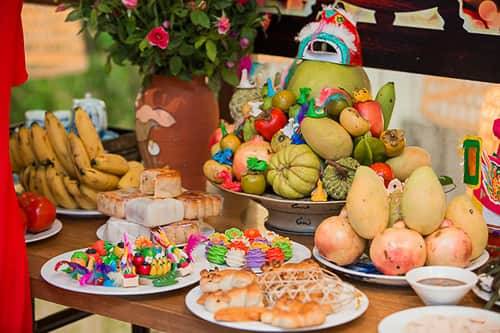
Поднос Праздника середины осени — это также символ луны, поднесение в жертву небу и земле и пожелание хорошей жизни, хороших урожаев и воссоединения семьи. Не забывают вьетнамцы и про блюда из лотоса. Лотос является типичным ингредиентом для блюд середины осени, в то же время лотос символизирует Кота Туонг, поедающего лотос во время праздника середины осени.
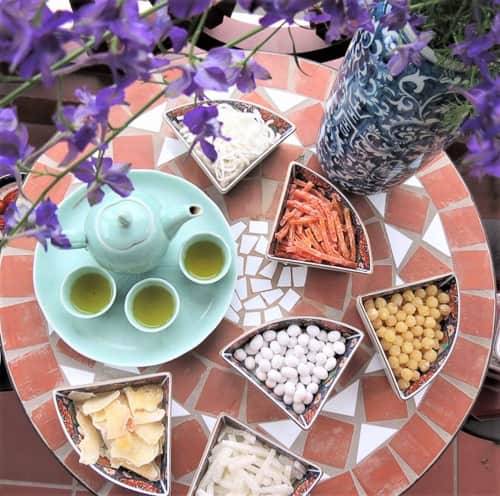
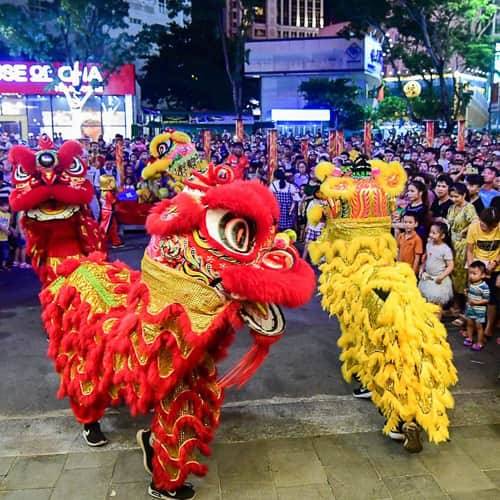
Дети (и взрослые) наряжаются в костюмы драконов, львов и тигров и исполняют свои танцы под звуки барабанов. Танец льва — это хорошее предзнаменование (Лев символизирует удачу, благополучие и является добрым знаком для всех семей), поэтому «Танец льва» — это пожелание удачи каждому. Если танец исполнили для Вас — вы должны дать несколько счастливых монет танцующим.
Шествия огромных фигур под рев барабанов. Ярче всего фестиваль проводится в Туенкуанг (близ Ханоя). Большинство моделей изготавливаются местными жителями из бамбука и бумаги
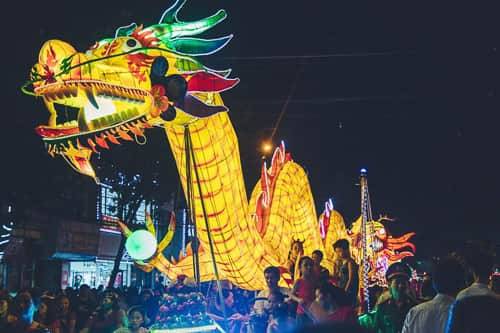
Форма навеяна легендами или предметами, связанными с работой и реальной жизнью. Огромные светящиеся фигуры — это визитная карточка Туенкуанг в середине осеннего сезона.
В 2004 году в Туен Куанге впервые появились модели гигантских фонарей длиной около 10 метров. С тех пор культура проведения с огромными фонарями стала неотъемлемой частью Фестиваля середины осени здесь. Фестиваль середины осени в Туенкуанге предназначен не только для детей — он напрямую связан с жизнью людей, становясь счастливыми временем для людей всех возрастов.
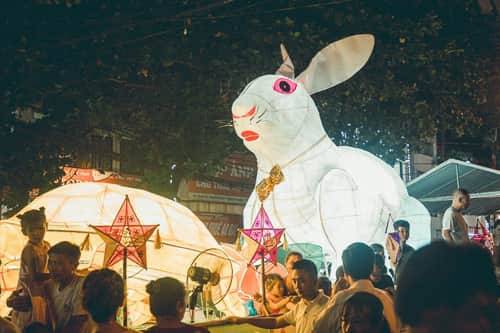
Лунные пироги. Самая “вкусная” традиция на фестивале.
Лунные пироги, или лунные пряники готовят из простого теста, но с огромным количеством самых разных начинок — с бобовыми и лотосовыми пастами, орехами, фруктами, цукатами, ветчиной, рыбой и утиным желтком (что опять же традиционно лунная символика). Пироги делают круглыми или квадратными, яркими и румяными, вылепленными из искусно украшенных цветов, карпа и геометрических узоров.
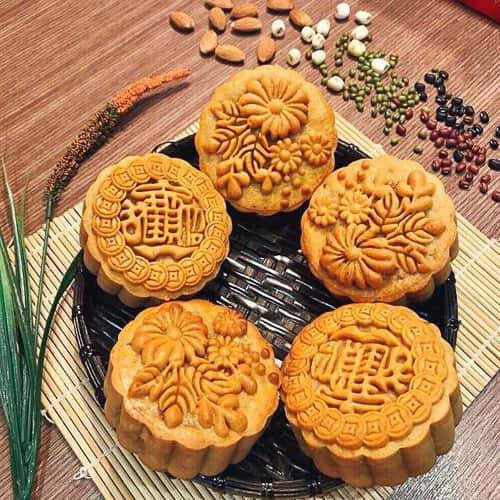
Традиционно запивают пироги свежим зеленым чаем. Лунный пирог — это не просто еда. Это глубокая культурная традиция, укоренившаяся в сердцах всех азиатских народов, символизирующая духовное единение с семьей.
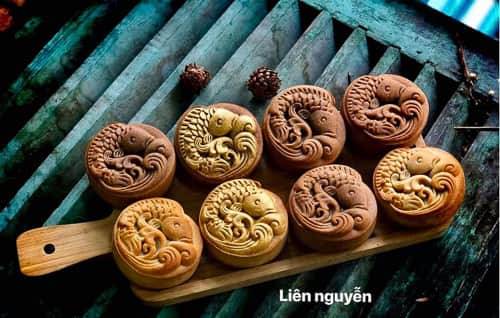
На Фестивале середины осени люди едят лунные пирожные вместе с семьей или дарят лунные пироги родственникам или друзьям, чтобы выразить свою любовь и наилучшие пожелания. Кстати, компания Tipo Cookies делает восхитительно красивые лунные пирожные. Печенье от Tipo Cookies можно купить у нас.
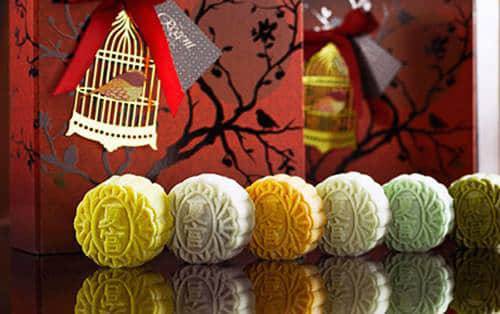
Поскольку лунные пирожные очень насыщенные, они идеально сочетаются с горячим зеленым чаем. Чай улун лучше всего подходит для пикантных лунных пирожных, а цветочные чаи хорошо сочетаются со сладкими лунными пирожными.
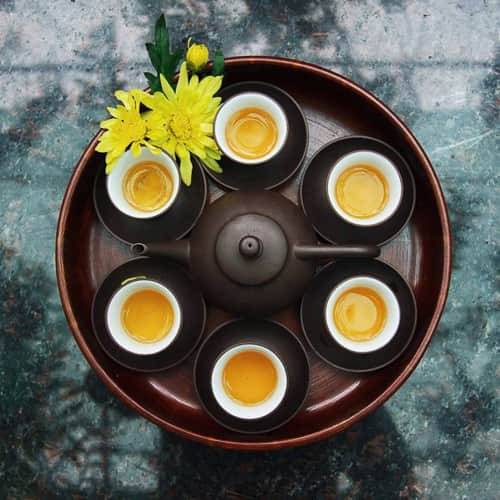
Команда Ванланг желает Вам теплого и счастливого Дня середины осени в кругу семьи!
For the related lunar festivals celebrated on the same day, see Mid-Autumn Festival (China), Tsukimi (Japan) and Chuseok (North and South Korea).
| Tết Trung Thu (節中秋) | |
|---|---|
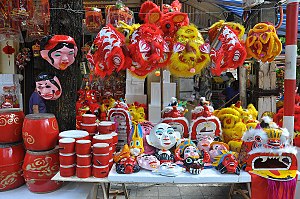
Children’s toys during the Tết Trung Thu |
|
| Official name | Tết Trung Thu |
| Also called | Tết Trông Trăng, Tết Hoa Đăng, Tết Đoàn Viên, Tết Thiếu Nhi or Tết Trẻ Con[1] |
| Observed by | Vietnamese |
| Type | Festival culture, country |
| Observances | Making offerings to ancestors, making moon viewing, hanging lanterns, lanterns procession, lion procession, carp procession, trống quân singing.[1] |
| Begins | the night of the 14th of the 8th lunar month |
| Ends | 15th day of the 8th lunar month (Rằm tháng Tám) |
| Date | 14th day of the 8th month in the Chinese calendar, 15th day of the 8th month of the Chinese lunar calendar |
| Frequency | Annual |
| Related to | Mid-Autumn Festival (in China) Tsukimi (in Japan) Chuseok (in Korea) Uposatha of Ashvini/Krittika (similar festivals that generally occur on the same day in Cambodia, India, Sri Lanka, Myanmar, Laos, and Thailand ) |
Tết Trung Thu (Chữ Hán: 節中秋) is a traditional Vietnamese festival held from the night of the 14th of the 8th lunar month to the end of the 15th of the 8th lunar month (Rằm tháng Tám). Despite its Chinese origin, recently this festival has become a children’s festival (Tết Thiếu Nhi),[2] also known as Tết Trông Trăng, Tết Đoàn Viên or Tết Hoa Đăng. Children look forward to this day because they are often given toys by adults, usually a star lamp, a mask, a kéo quân lamp, a tò he, and eat bánh trung thu (bánh nướng and bánh dẻo). On this day, people organize a feast to watch the moon. When the moon is high, children sing and dance while watching the full moon. In some places, people also organize lion dances or dragon dances for the children to enjoy.
Origins[edit]
It has been clearly established that Tết Trung Thu originated from the Chinese culture. There are three main legends that are best known to talk about the Tết Trung Thu: Chang’e and Hou Yi, Emperor Tang Ming Huang in China ascending to the moon and the story of uncle Cuội of Vietnam.
The Chinese have celebrated the harvest during the autumn full moon since the Shang dynasty (c. 1600–1046 BCE).[3][4] The term mid-autumn (中秋) first appeared in Rites of Zhou, a written collection of rituals of the Western Zhou dynasty (1046–771 BCE).[4] The celebration as a festival only started to gain popularity during the early Tang dynasty (618–907 CE).[4] One legend explains that Emperor Xuanzong of Tang started to hold formal celebrations in his palace after having explored the Moon-Palace.[3]
According to Phan Kế Bính in the book of Việt Nam phong tục, the custom of hanging lights to display the feast was due to the ancient scriptures about Emperor Tang Ming Huang. On the birthday of Emperor Tang Ming Huang, he ordered people to hang lights everywhere and arrange a party to celebrate, and since then it has become a custom.[5]
The tradition of lantern processions dates back to the Song Dynasty, due to the story that during the reign of Emperor Song Renzong in China, a carp became a monster, and every night the moon appeared to turn into a girl to harm people. At that time, a new mandarin Bao Gong ordered the folk to make a fish lamp like its image and then bring it out to play in the street so that it would be afraid and not dare to harm the people.[5]
Also according to Phan Kế Bính, the custom of trống quân singing dates back to the reign of Emperor Quang Trung — Nguyễn Huệ, «when he brought troops to the North. Many soldiers were homesick.» Nguyễn Huệ presented a way for both sides to pretend to be boys and girls, singing and responding to each other to make soldiers happy and not homesick. There is a drum beat as a beat, so it is called a trống quân (military drum).[5]
Activities and customs[edit]
Vietnamese children carry the star lantern during the Tết Trung Thu
According to Phan Kế Bính in the book of Việt Nam phong tục, «Our people in the 19th century, during the day, made offerings to their ancestors, and in the evening came to present a feast to enjoy the moon. At the beginning of the feast was moon cakes and used many kinds of fruit cakes, dyed a lot colorful, red blue, white and yellow. Girls in the street compete with each other ingenuity, peeling papaya into flowers, molding dough to make shrimp, whale…».[5]
Children’s toys in the Tết Trung Thu are made of paper and shaped like creatures such as butterflies, mantises, elephants, horses, unicorns, lions, dragons, deer, shrimps, and fish. During the evenings of the Tết Trung Thu, children play tug and catch, and have a procession of lanterns, lions, drums, and vi:thanh la.[5]
On this occasion, people buy moon cakes, tea, and wine to worship their ancestors in the evening when the full moon has just risen. Also on this day, people often give grandparents, parents, teachers, friends, relatives and other benefactors mooncakes, fruits, tea and wine. The Chinese often organize dragon dances on the occasion of the Tết Trung Thu, while the Vietnamese do lion dances. The lion symbolizes luck, prosperity and is a good omen for all families. In the past, Vietnamese people also held trống quân singing and hanging lanterns in kéo quân during the Tết Trung Thu. The drums are sung to the rhythm of three «thình, thùng, thình».
According to Vietnamese custom, during the Tết Trung Thu, adults arrange parties for children to celebrate the Tết Trung Thu, buy and make all kinds of candle-lit lanterns to hang in the house and let the children process the lights.[2] The Tết Trung Thu includes moon cakes, candies, sugar cane, grapefruit and other fruits.[6]
Lantern procession[edit]
In some rural areas, where neighbors have closer relationships, people often organize so children can carry lanterns together through villages, hamlets and neighborhoods on the Mid-Autumn Festival night. Lantern festivals can be initiated by the local government or by youth groups in the village. They compete with each other to have the largest or prettiest lanterns in the procession. In Phan Thiết (Bình Thuận), a large-scale lantern procession was held with thousands of elementary and junior high school students marching through the streets. This festival was set as the largest record in Vietnam. This is a traditional mid-autumn lantern procession festival dating back hundreds of years, and the scale of the festival in Phan Thiết every year is bigger and bigger, but also more «commercial».[7] In Tuyên Quang, there is also a large lantern procession festival, fully mobilized from the creativity of the people, from village to village and has not been commercialized.
Lion dance[edit]
Lion dance in the Tết Trung Thu
Lion dance is usually held before the Tết Trung Thu, but the busiest are the fifteenth and sixteenth nights.
Party[edit]
Children in Hanoi are having a party to watch the moon
Tết Trung Thu at Ho Chi Minh City Cancer Center with volunteers and sick children
The usual Tết Trung Thu with the focus on the dog is made of grapefruit cloves, with two black beans attached as eyes. Around there are more fruits and cakes like bánh nướng, bánh dẻo or vegetarian cakes in the shape of a mother pig with a herd of chubby piglets, or a carp are popular images. Grapefruit seeds are usually peeled and skewered on steel wires, dried for 2–3 weeks before the full moon, and on the Tết Trung Thu night, the strings of grapefruit seeds are brought to light the typical fruits and foods of this occasion are bananas and nuggets, apricots, red and blue pickled persimmons, a few daisies, and grapefruit is an indispensable fruit. When the moon reaches the top of the head is the moment to break the feast, everyone will enjoy the taste of the Mid-Autumn Festival.
The custom of looking at the moon is also related to the legend of Uncle Cuội on the moon, because one day Cuội was away, the precious banyan tree was uprooted and flew up into the sky, uncle Cuội clung to the tree roots but could not and was flown. to the moon with his tree. Looking up at the Moon, one can see a clear black spot in the shape of an old tree with people sitting under it, and children believe that it is a picture of uncle Cuội sitting at the base of a banyan tree.
Making Tết Trung Thu toys[edit]
Masks, lion lights, star lights and lion heads are the most popular toys during the Mid-Autumn Festival. In the South, the two cities of Hội An and Saigon are famous throughout the country for the craft of making decorative lanterns and paper lanterns used in the Tết Trung Thu. Previously in the North, during the subsidy period (1976 — 1986), toys for children during the Tết Trung Thu were very rare. Most families often made their own toys such as bỏi drums, lanterns, monk lamps, star lamps, kéo quân lamps, masks, tò he, and pinwheels for children in the family. There are also toy ship models. The masks are usually made of paperboard or cardboard, with popular images of children’s favorite characters at that time such as: lion head, Ông Địa, Sun Wukong, Zhubajie, or Baigu jing. Today, most toys in Vietnam come from China, and the masks are made of thin plastic.
Types of Trung thu cakes (moon cakes)[edit]
Box of bánh nướng and bánh dẻo
From traditional to modern, moon cakes are increasingly diversified as manufacturers get creative in using different ingredients and foods into the filling; stamping cake designs into many vivid shapes; Packed with beautifully designed packaging. However, based on the recipe for making the crust, there are only two types of bánh Trung thu: bánh nướng (baked cakes) and bánh dẻo (flexible cakes).
Bánh nướng[edit]
Bánh nướng are made with a crust of flour and a little oil. Sugar to mix into the crust is usually cooked with malt to turn amber and keep for as long as possible (usually after the Tết Trung Thu, bakers cook sugar water, store it well until the next season to use). In the past, in Vietnam, the filling for pies was usually mixed, with a little bit of lime leaves, fatty meat, jam, melon seeds, and sausages.
After molding the cake, pressing the mold, the cake is put in the oven. The baking process is divided into two stages of which about 2/3 of the baking time is the first stage. After that, the cake is unloaded, cooled, covered with egg yolk and then baked for the remaining 1/3 of the time.
Bánh dẻo[edit]
Traditionally, mooncakes are made with the shell of roasted and finely ground glutinous rice flour, boiled and cooled white sugar water (not using malt as in pies), juice from pomelo flowers.[8] The filling is made from cooked foods and ingredients. The cake is molded and pressed and can be used immediately without needing to be in the oven.
Singing Trống quân[edit]
Tết Trung Thu in the North also has the custom of singing trống quân. The male and female sides sing and respond to each other, while beating on a barbed wire or steel wire stretched on an empty barrel, popping out «thình thùng thình» sounds as the rhythm for the song. The songs are used to sing along with the rhyme, according to their own ideas, or sometimes they are familiar, sometimes they are improvised. The confrontation in the drum singing sessions is very fun and sometimes difficult because of the difficult puzzles.
Give a gift[edit]
On Tết Trung Thu, people often give gifts to each other. Gifts are usually boxes of cakes, lanterns, clothes, money. Agencies and businesses also give gifts to customers and employees, sometimes even buying mooncake trucks many companies have thousands of workers, order thousands of boxes of cakes with generous commissionscalculated on the total amount of moon cakes consumed in 2006 (statistics from manufacturers) is estimated at 6,500-6,800 tons, taking the average price of a box of 220-250g cakes about 100,000-130,000 VND, consumers have spent more than 800 billion VND for about 7 million boxes of cakes.[9] And the boxes of cakes were as expensive as gold, and the poor could not afford them [10] kept running around from one to the other.
The object of gift giving by adults is usually superiors such as parents, superiors, people in need, teachers or also neighbors, friends or children in the house. Usually, the more important the recipient of the gift, the higher the value of the gift must be. Giving Tết Trung Thu gifts is a common habit when life improves after Đổi Mới.
For businesses or individuals, not having Tết Trung Thu gifts can be seen as negligent or shameful, so this is not a small expense when it comes to the Tết Trung Thu. The cost of giving gifts is usually spent from the cost of receiving guests in cash. Due to the high commission or discount of bakeries (maybe up to 35%)[11] many people prefer to use agency money to benefit.
The giving of expensive Tết Trung Thu gifts is a «graceful» occasion for adults. Many people often take advantage of this occasion to give gifts to buy and sell officials. The thick boxes of moon cakes with the «gold» and «dollar» filling inside have influenced many officials, and giving gifts during the Tết Trung Thu is a custom of these ingredients.[12]
Watching the moon[edit]
People often watch the moon on the night of the Tết Trung Thu because this is the best time to see the moon
-
- Muốn ăn lúa tháng Năm, trông trăng rằm tháng Tám.
- Tỏ trăng Mười Bốn được tằm, đục trăng hôm Rằm thì được lúa chiêm.
Tết Trung Thu in literature and art[edit]
Poetry about Tết Trung Thu[edit]
The poet Tản Đà also mentioned the Tết Trung with the following verses:
- Có bầu có bạn can chi tủi
- Cùng gió cùng mây thế mới vui
- Rồi cứ mỗi năm rằm tháng tám
- Tựa nhau trông xuống thế gian cười.
Nguyễn Du[13]
-
- Khi chén rượu khi cuộc cờ,
- Khi xem hoa nở khi chờ trăng lên
Songs about Tết Trung Thu[edit]
Musician Lê Thương wrote a song about this topic, Thằng Cuội, in the song, there is a passage «Bóng trăng trắng ngà có cây đa to, có thằng Cuội già ôm một mối mơ…..Có con dế mèn, suốt trong đêm thâu, hát xẩm không tiền, nên nghèo xác xơ…«.
Musician Ngọc Lễ has a piece titled Cắc tùng cắc tùng about the Tết Trung Thu for children: «Cắc tùng cắc cắc tùng, Em đi chơi trung thu này, Cắc tùng tiếng trống lân tưng bừng….»
Tết Trung Thu toys[edit]
When it comes to Tết Trung Thu toys, we have to talk about lanterns, which are indispensable for children to go to the moon procession. From the past to the present, the two cities of Hội An and Saigon are famous throughout the country for the craft of making decorative lanterns and paper lanterns used in the Tết Trung Thu. According to Văn Công Lý now living in Hội An, the ancestor of the lantern making industry here is called Xã Đường. Unique Hội An lanterns are few places, Hội An lanterns are beautiful thanks to all shapes, designs, large and small. The fabric covering the lamp instead of paper is the famous Hà Đông silk, making the light more magical and shimmering.
In Saigon, from before 1975 until now, Phú Bình in District 11 of Saigon is still the largest center for the production of Trung Thu lanterns in South Vietnam, supplying the whole region. This is a migrant village in 1954, originally from Báo Đáp village in Nam Định province. This village in Northern is famous for its dyeing industry. When coming to the Southern, people still live together by dyeing, weaving and making shoes. Phú Bình after 1975 is located in the area of Phú Trung ward, Tân Phú district and Ward 5, District 11, Ho Chi Minh City, about half a kilometer from Đầm Sen tourist area. At first, when coming to the South, Phú Bình only specialized in producing simple Tết Trung Thu lights such as flute lights, fish, stars… intentionally for students to have fun on the holiday night.
From 1960 to 1975, Phú Bình annually produced more than half a million mid-autumn lanterns, supplying all provinces from Bến Hải to Cà Mau. After that, the people in the area continued to do their old jobs. In 1994, Chinese lanterns massively infiltrated the Vietnamese market, suppressing Phú Bình lamps, making the people here suffer from starvation because the goods were delayed because of the beautiful Chinese lanterns, new style, very convenient when going out in the wind, not afraid of burning because of the battery, the price is cheap.
In Vietnam market, the technology industry to produce toys for children on the occasion of the Tết Trung Thu helps create jobs and profits for many small and medium enterprises, due to common materials and simple technology, little capital, after a time for Chinese toys to dominate the market until 2006 Vietnamese lantern production recovered and re-occupy the domestic market.
See also[edit]
- List of harvest festivals
- Tết Nguyên Đán
- Tết Đoan Ngọ
- Tsukimi, the Japanese autumn harvest festival held on the same day
- Chuseok, the Korean autumn harvest festival held on the same day
- Mid-Autumn Festival, the Chinese Moon-observance festival held on the same day
References[edit]
- ^ a b Việt Nam phong tục, Phan Kế Bính
- ^ a b Cohen, Barbara (October 1, 1995). «Mid-Autumn Children’s Festival». Archived from the original on January 21, 2013. Retrieved November 10, 2012.
- ^ a b Siu, Kin Wai Michael (September 1999). «Lanterns of the Mid-Autumn Festival: A Reflection of Hong Kong Cultural Change». The Journal of Popular Culture. 33 (2): 67–86. doi:10.1111/j.0022-3840.1999.3302_67.x.
- ^ a b c Yu, Jose Vidamor B. (2000). Inculturation of Filipino-Chinese culture mentality. Roma: Pontificia università gregoriana. pp. 111–112. ISBN 978-8876528484.
- ^ a b c d e Việt Nam phong tục, by Phan Kế Bính, Literature Publishing House, 2005 reprint, page 49
- ^ Jonathan H.X. Lee & editors, Kathleen M. Nadeau (2010). Encyclopedia of Asian American Folklore and Folklife. Santa Barbara, Calif.: ABC-CLIO. p. 1180. ISBN 978-0313350665.
{{cite book}}: CS1 maint: uses authors parameter (link) - ^ «Đêm hội trung thu tốn kém nhất Việt Nam». Thanh Niên. September 7, 2014.
- ^ Công thức làm bánh dẻo trung thu Thúy Hà, Ngôi Sao 30/8/2011 16:01 GMT+7
- ^ Bích Nga (October 4, 2006). «Vòng đời bánh biếu». Sài Gòn tiếp thị. Archived from the original on 2013-09-20.
- ^ Lê Ái (September 30, 2006). «Bánh trung thu 2006 giá cao vẫn đắt hàng». VnExpress (in Vietnamese).
- ^ Nguyễn Nga (September 19, 2006). «Trung thu: Mùa chạy đua của các thương hiệu». Vietnamnet. Archived from the original on 2006-09-25. Retrieved 2013-09-19.
- ^ «Để Tết Nhi đồng thật ý nghĩa». Archived from the original on 2005-05-10. Retrieved September 24, 2004.
- ^ Tết trung thu năm 2019 (Việt Nam) Google Doodle
External links[edit]
- Tết Trung Thu at Encyclopedic Dictionary of Vietnam
- Bác Hồ viết thơ Trung thu cho thiếu nhi
- Trung thu là tết thiếu nhi mà sao tràn ngập hoài niệm của người lớn?
For the related lunar festivals celebrated on the same day, see Mid-Autumn Festival (China), Tsukimi (Japan) and Chuseok (North and South Korea).
| Tết Trung Thu (節中秋) | |
|---|---|

Children’s toys during the Tết Trung Thu |
|
| Official name | Tết Trung Thu |
| Also called | Tết Trông Trăng, Tết Hoa Đăng, Tết Đoàn Viên, Tết Thiếu Nhi or Tết Trẻ Con[1] |
| Observed by | Vietnamese |
| Type | Festival culture, country |
| Observances | Making offerings to ancestors, making moon viewing, hanging lanterns, lanterns procession, lion procession, carp procession, trống quân singing.[1] |
| Begins | the night of the 14th of the 8th lunar month |
| Ends | 15th day of the 8th lunar month (Rằm tháng Tám) |
| Date | 14th day of the 8th month in the Chinese calendar, 15th day of the 8th month of the Chinese lunar calendar |
| Frequency | Annual |
| Related to | Mid-Autumn Festival (in China) Tsukimi (in Japan) Chuseok (in Korea) Uposatha of Ashvini/Krittika (similar festivals that generally occur on the same day in Cambodia, India, Sri Lanka, Myanmar, Laos, and Thailand ) |
Tết Trung Thu (Chữ Hán: 節中秋) is a traditional Vietnamese festival held from the night of the 14th of the 8th lunar month to the end of the 15th of the 8th lunar month (Rằm tháng Tám). Despite its Chinese origin, recently this festival has become a children’s festival (Tết Thiếu Nhi),[2] also known as Tết Trông Trăng, Tết Đoàn Viên or Tết Hoa Đăng. Children look forward to this day because they are often given toys by adults, usually a star lamp, a mask, a kéo quân lamp, a tò he, and eat bánh trung thu (bánh nướng and bánh dẻo). On this day, people organize a feast to watch the moon. When the moon is high, children sing and dance while watching the full moon. In some places, people also organize lion dances or dragon dances for the children to enjoy.
Origins[edit]
It has been clearly established that Tết Trung Thu originated from the Chinese culture. There are three main legends that are best known to talk about the Tết Trung Thu: Chang’e and Hou Yi, Emperor Tang Ming Huang in China ascending to the moon and the story of uncle Cuội of Vietnam.
The Chinese have celebrated the harvest during the autumn full moon since the Shang dynasty (c. 1600–1046 BCE).[3][4] The term mid-autumn (中秋) first appeared in Rites of Zhou, a written collection of rituals of the Western Zhou dynasty (1046–771 BCE).[4] The celebration as a festival only started to gain popularity during the early Tang dynasty (618–907 CE).[4] One legend explains that Emperor Xuanzong of Tang started to hold formal celebrations in his palace after having explored the Moon-Palace.[3]
According to Phan Kế Bính in the book of Việt Nam phong tục, the custom of hanging lights to display the feast was due to the ancient scriptures about Emperor Tang Ming Huang. On the birthday of Emperor Tang Ming Huang, he ordered people to hang lights everywhere and arrange a party to celebrate, and since then it has become a custom.[5]
The tradition of lantern processions dates back to the Song Dynasty, due to the story that during the reign of Emperor Song Renzong in China, a carp became a monster, and every night the moon appeared to turn into a girl to harm people. At that time, a new mandarin Bao Gong ordered the folk to make a fish lamp like its image and then bring it out to play in the street so that it would be afraid and not dare to harm the people.[5]
Also according to Phan Kế Bính, the custom of trống quân singing dates back to the reign of Emperor Quang Trung — Nguyễn Huệ, «when he brought troops to the North. Many soldiers were homesick.» Nguyễn Huệ presented a way for both sides to pretend to be boys and girls, singing and responding to each other to make soldiers happy and not homesick. There is a drum beat as a beat, so it is called a trống quân (military drum).[5]
Activities and customs[edit]
Vietnamese children carry the star lantern during the Tết Trung Thu
According to Phan Kế Bính in the book of Việt Nam phong tục, «Our people in the 19th century, during the day, made offerings to their ancestors, and in the evening came to present a feast to enjoy the moon. At the beginning of the feast was moon cakes and used many kinds of fruit cakes, dyed a lot colorful, red blue, white and yellow. Girls in the street compete with each other ingenuity, peeling papaya into flowers, molding dough to make shrimp, whale…».[5]
Children’s toys in the Tết Trung Thu are made of paper and shaped like creatures such as butterflies, mantises, elephants, horses, unicorns, lions, dragons, deer, shrimps, and fish. During the evenings of the Tết Trung Thu, children play tug and catch, and have a procession of lanterns, lions, drums, and vi:thanh la.[5]
On this occasion, people buy moon cakes, tea, and wine to worship their ancestors in the evening when the full moon has just risen. Also on this day, people often give grandparents, parents, teachers, friends, relatives and other benefactors mooncakes, fruits, tea and wine. The Chinese often organize dragon dances on the occasion of the Tết Trung Thu, while the Vietnamese do lion dances. The lion symbolizes luck, prosperity and is a good omen for all families. In the past, Vietnamese people also held trống quân singing and hanging lanterns in kéo quân during the Tết Trung Thu. The drums are sung to the rhythm of three «thình, thùng, thình».
According to Vietnamese custom, during the Tết Trung Thu, adults arrange parties for children to celebrate the Tết Trung Thu, buy and make all kinds of candle-lit lanterns to hang in the house and let the children process the lights.[2] The Tết Trung Thu includes moon cakes, candies, sugar cane, grapefruit and other fruits.[6]
Lantern procession[edit]
In some rural areas, where neighbors have closer relationships, people often organize so children can carry lanterns together through villages, hamlets and neighborhoods on the Mid-Autumn Festival night. Lantern festivals can be initiated by the local government or by youth groups in the village. They compete with each other to have the largest or prettiest lanterns in the procession. In Phan Thiết (Bình Thuận), a large-scale lantern procession was held with thousands of elementary and junior high school students marching through the streets. This festival was set as the largest record in Vietnam. This is a traditional mid-autumn lantern procession festival dating back hundreds of years, and the scale of the festival in Phan Thiết every year is bigger and bigger, but also more «commercial».[7] In Tuyên Quang, there is also a large lantern procession festival, fully mobilized from the creativity of the people, from village to village and has not been commercialized.
Lion dance[edit]
Lion dance in the Tết Trung Thu
Lion dance is usually held before the Tết Trung Thu, but the busiest are the fifteenth and sixteenth nights.
Party[edit]
Children in Hanoi are having a party to watch the moon
Tết Trung Thu at Ho Chi Minh City Cancer Center with volunteers and sick children
The usual Tết Trung Thu with the focus on the dog is made of grapefruit cloves, with two black beans attached as eyes. Around there are more fruits and cakes like bánh nướng, bánh dẻo or vegetarian cakes in the shape of a mother pig with a herd of chubby piglets, or a carp are popular images. Grapefruit seeds are usually peeled and skewered on steel wires, dried for 2–3 weeks before the full moon, and on the Tết Trung Thu night, the strings of grapefruit seeds are brought to light the typical fruits and foods of this occasion are bananas and nuggets, apricots, red and blue pickled persimmons, a few daisies, and grapefruit is an indispensable fruit. When the moon reaches the top of the head is the moment to break the feast, everyone will enjoy the taste of the Mid-Autumn Festival.
The custom of looking at the moon is also related to the legend of Uncle Cuội on the moon, because one day Cuội was away, the precious banyan tree was uprooted and flew up into the sky, uncle Cuội clung to the tree roots but could not and was flown. to the moon with his tree. Looking up at the Moon, one can see a clear black spot in the shape of an old tree with people sitting under it, and children believe that it is a picture of uncle Cuội sitting at the base of a banyan tree.
Making Tết Trung Thu toys[edit]
Masks, lion lights, star lights and lion heads are the most popular toys during the Mid-Autumn Festival. In the South, the two cities of Hội An and Saigon are famous throughout the country for the craft of making decorative lanterns and paper lanterns used in the Tết Trung Thu. Previously in the North, during the subsidy period (1976 — 1986), toys for children during the Tết Trung Thu were very rare. Most families often made their own toys such as bỏi drums, lanterns, monk lamps, star lamps, kéo quân lamps, masks, tò he, and pinwheels for children in the family. There are also toy ship models. The masks are usually made of paperboard or cardboard, with popular images of children’s favorite characters at that time such as: lion head, Ông Địa, Sun Wukong, Zhubajie, or Baigu jing. Today, most toys in Vietnam come from China, and the masks are made of thin plastic.
Types of Trung thu cakes (moon cakes)[edit]
Box of bánh nướng and bánh dẻo
From traditional to modern, moon cakes are increasingly diversified as manufacturers get creative in using different ingredients and foods into the filling; stamping cake designs into many vivid shapes; Packed with beautifully designed packaging. However, based on the recipe for making the crust, there are only two types of bánh Trung thu: bánh nướng (baked cakes) and bánh dẻo (flexible cakes).
Bánh nướng[edit]
Bánh nướng are made with a crust of flour and a little oil. Sugar to mix into the crust is usually cooked with malt to turn amber and keep for as long as possible (usually after the Tết Trung Thu, bakers cook sugar water, store it well until the next season to use). In the past, in Vietnam, the filling for pies was usually mixed, with a little bit of lime leaves, fatty meat, jam, melon seeds, and sausages.
After molding the cake, pressing the mold, the cake is put in the oven. The baking process is divided into two stages of which about 2/3 of the baking time is the first stage. After that, the cake is unloaded, cooled, covered with egg yolk and then baked for the remaining 1/3 of the time.
Bánh dẻo[edit]
Traditionally, mooncakes are made with the shell of roasted and finely ground glutinous rice flour, boiled and cooled white sugar water (not using malt as in pies), juice from pomelo flowers.[8] The filling is made from cooked foods and ingredients. The cake is molded and pressed and can be used immediately without needing to be in the oven.
Singing Trống quân[edit]
Tết Trung Thu in the North also has the custom of singing trống quân. The male and female sides sing and respond to each other, while beating on a barbed wire or steel wire stretched on an empty barrel, popping out «thình thùng thình» sounds as the rhythm for the song. The songs are used to sing along with the rhyme, according to their own ideas, or sometimes they are familiar, sometimes they are improvised. The confrontation in the drum singing sessions is very fun and sometimes difficult because of the difficult puzzles.
Give a gift[edit]
On Tết Trung Thu, people often give gifts to each other. Gifts are usually boxes of cakes, lanterns, clothes, money. Agencies and businesses also give gifts to customers and employees, sometimes even buying mooncake trucks many companies have thousands of workers, order thousands of boxes of cakes with generous commissionscalculated on the total amount of moon cakes consumed in 2006 (statistics from manufacturers) is estimated at 6,500-6,800 tons, taking the average price of a box of 220-250g cakes about 100,000-130,000 VND, consumers have spent more than 800 billion VND for about 7 million boxes of cakes.[9] And the boxes of cakes were as expensive as gold, and the poor could not afford them [10] kept running around from one to the other.
The object of gift giving by adults is usually superiors such as parents, superiors, people in need, teachers or also neighbors, friends or children in the house. Usually, the more important the recipient of the gift, the higher the value of the gift must be. Giving Tết Trung Thu gifts is a common habit when life improves after Đổi Mới.
For businesses or individuals, not having Tết Trung Thu gifts can be seen as negligent or shameful, so this is not a small expense when it comes to the Tết Trung Thu. The cost of giving gifts is usually spent from the cost of receiving guests in cash. Due to the high commission or discount of bakeries (maybe up to 35%)[11] many people prefer to use agency money to benefit.
The giving of expensive Tết Trung Thu gifts is a «graceful» occasion for adults. Many people often take advantage of this occasion to give gifts to buy and sell officials. The thick boxes of moon cakes with the «gold» and «dollar» filling inside have influenced many officials, and giving gifts during the Tết Trung Thu is a custom of these ingredients.[12]
Watching the moon[edit]
People often watch the moon on the night of the Tết Trung Thu because this is the best time to see the moon
-
- Muốn ăn lúa tháng Năm, trông trăng rằm tháng Tám.
- Tỏ trăng Mười Bốn được tằm, đục trăng hôm Rằm thì được lúa chiêm.
Tết Trung Thu in literature and art[edit]
Poetry about Tết Trung Thu[edit]
The poet Tản Đà also mentioned the Tết Trung with the following verses:
- Có bầu có bạn can chi tủi
- Cùng gió cùng mây thế mới vui
- Rồi cứ mỗi năm rằm tháng tám
- Tựa nhau trông xuống thế gian cười.
Nguyễn Du[13]
-
- Khi chén rượu khi cuộc cờ,
- Khi xem hoa nở khi chờ trăng lên
Songs about Tết Trung Thu[edit]
Musician Lê Thương wrote a song about this topic, Thằng Cuội, in the song, there is a passage «Bóng trăng trắng ngà có cây đa to, có thằng Cuội già ôm một mối mơ…..Có con dế mèn, suốt trong đêm thâu, hát xẩm không tiền, nên nghèo xác xơ…«.
Musician Ngọc Lễ has a piece titled Cắc tùng cắc tùng about the Tết Trung Thu for children: «Cắc tùng cắc cắc tùng, Em đi chơi trung thu này, Cắc tùng tiếng trống lân tưng bừng….»
Tết Trung Thu toys[edit]
When it comes to Tết Trung Thu toys, we have to talk about lanterns, which are indispensable for children to go to the moon procession. From the past to the present, the two cities of Hội An and Saigon are famous throughout the country for the craft of making decorative lanterns and paper lanterns used in the Tết Trung Thu. According to Văn Công Lý now living in Hội An, the ancestor of the lantern making industry here is called Xã Đường. Unique Hội An lanterns are few places, Hội An lanterns are beautiful thanks to all shapes, designs, large and small. The fabric covering the lamp instead of paper is the famous Hà Đông silk, making the light more magical and shimmering.
In Saigon, from before 1975 until now, Phú Bình in District 11 of Saigon is still the largest center for the production of Trung Thu lanterns in South Vietnam, supplying the whole region. This is a migrant village in 1954, originally from Báo Đáp village in Nam Định province. This village in Northern is famous for its dyeing industry. When coming to the Southern, people still live together by dyeing, weaving and making shoes. Phú Bình after 1975 is located in the area of Phú Trung ward, Tân Phú district and Ward 5, District 11, Ho Chi Minh City, about half a kilometer from Đầm Sen tourist area. At first, when coming to the South, Phú Bình only specialized in producing simple Tết Trung Thu lights such as flute lights, fish, stars… intentionally for students to have fun on the holiday night.
From 1960 to 1975, Phú Bình annually produced more than half a million mid-autumn lanterns, supplying all provinces from Bến Hải to Cà Mau. After that, the people in the area continued to do their old jobs. In 1994, Chinese lanterns massively infiltrated the Vietnamese market, suppressing Phú Bình lamps, making the people here suffer from starvation because the goods were delayed because of the beautiful Chinese lanterns, new style, very convenient when going out in the wind, not afraid of burning because of the battery, the price is cheap.
In Vietnam market, the technology industry to produce toys for children on the occasion of the Tết Trung Thu helps create jobs and profits for many small and medium enterprises, due to common materials and simple technology, little capital, after a time for Chinese toys to dominate the market until 2006 Vietnamese lantern production recovered and re-occupy the domestic market.
See also[edit]
- List of harvest festivals
- Tết Nguyên Đán
- Tết Đoan Ngọ
- Tsukimi, the Japanese autumn harvest festival held on the same day
- Chuseok, the Korean autumn harvest festival held on the same day
- Mid-Autumn Festival, the Chinese Moon-observance festival held on the same day
References[edit]
- ^ a b Việt Nam phong tục, Phan Kế Bính
- ^ a b Cohen, Barbara (October 1, 1995). «Mid-Autumn Children’s Festival». Archived from the original on January 21, 2013. Retrieved November 10, 2012.
- ^ a b Siu, Kin Wai Michael (September 1999). «Lanterns of the Mid-Autumn Festival: A Reflection of Hong Kong Cultural Change». The Journal of Popular Culture. 33 (2): 67–86. doi:10.1111/j.0022-3840.1999.3302_67.x.
- ^ a b c Yu, Jose Vidamor B. (2000). Inculturation of Filipino-Chinese culture mentality. Roma: Pontificia università gregoriana. pp. 111–112. ISBN 978-8876528484.
- ^ a b c d e Việt Nam phong tục, by Phan Kế Bính, Literature Publishing House, 2005 reprint, page 49
- ^ Jonathan H.X. Lee & editors, Kathleen M. Nadeau (2010). Encyclopedia of Asian American Folklore and Folklife. Santa Barbara, Calif.: ABC-CLIO. p. 1180. ISBN 978-0313350665.
{{cite book}}: CS1 maint: uses authors parameter (link) - ^ «Đêm hội trung thu tốn kém nhất Việt Nam». Thanh Niên. September 7, 2014.
- ^ Công thức làm bánh dẻo trung thu Thúy Hà, Ngôi Sao 30/8/2011 16:01 GMT+7
- ^ Bích Nga (October 4, 2006). «Vòng đời bánh biếu». Sài Gòn tiếp thị. Archived from the original on 2013-09-20.
- ^ Lê Ái (September 30, 2006). «Bánh trung thu 2006 giá cao vẫn đắt hàng». VnExpress (in Vietnamese).
- ^ Nguyễn Nga (September 19, 2006). «Trung thu: Mùa chạy đua của các thương hiệu». Vietnamnet. Archived from the original on 2006-09-25. Retrieved 2013-09-19.
- ^ «Để Tết Nhi đồng thật ý nghĩa». Archived from the original on 2005-05-10. Retrieved September 24, 2004.
- ^ Tết trung thu năm 2019 (Việt Nam) Google Doodle
External links[edit]
- Tết Trung Thu at Encyclopedic Dictionary of Vietnam
- Bác Hồ viết thơ Trung thu cho thiếu nhi
- Trung thu là tết thiếu nhi mà sao tràn ngập hoài niệm của người lớn?
Из этой статьи вы узнаете:
-
Праздники Колеса Года
-
Праздник Имболк — день начала весны
-
Праздник Остара — день весеннего равноденствия
-
Праздник Лита — день летнего солнцестояния
-
Лугнасад — праздник урожая и осени
-
Мабон — день осеннего равноденствия
-
Самайн — праздник кельтского нового года
-
Йоль — день зимнего солнцестояния
Колесо Года — это магический календарь современного язычества. Он отражает смену сезонов, а собственно праздники Колеса Года являются важными точками переходов, днями особого напряжения энергий.
Издавна мудрые люди обращали внимание на связь времен года и человеческой жизни. Таким образом, сложились традиции отмечания праздников Колеса Года — точек перехода из сезона в сезон. В основе современного магического календаря, который можно назвать универсальным по той причине, что именно он более всего распространен и применяется колдунами, ведьмами и язычниками на всех континентах, лежат кельтские праздники Колеса Года. Всего их восемь. Четыре связаны с астрономическими событиями — это равноденствия и солнцестояния, остальные четыре являются Праздниками Огня (Костров).
Колесо года у Викки также включает в себя Лунные эсбаты — полнолуния, но мы в этой статье остановимся именно на «общепринятом» колдовском календаре, поскольку он связан с движением звезд и планет, с длиной дня и ночи.
Ниже вы найдете информацию про Колесо Года, о ритуалах и традициях, о том, как отмечаются праздники годового цикла у современных язычников.
Праздники Колеса Года
Имболк (Imbolc) — 1-2 февраля
Остара (Ostara) — весеннее равноденствие, 21-22 марта
Белтайн (Bealtaine) — ночь с 30 апреля на 1 мая
Лита (Litha) — летнее солнцестояние, 21-22 июня
Ламмас/Лугнасад (Lughnasadh) — 1-2 августа
Мабон (Mabon) — осеннее равноденствие, 21-22 сентября
Самайн (Samhain) — ночь с 31 октября на 1 ноября
Йоль (Yule) — зимнее солнцестояние, 21-22 декабря
Праздник Имболк — день начала весны
1-2 февраля. Несмотря на то, что Имболк приходится на начало февраля, «волчьего месяца», именно он является праздником порога, перехода от Темного Времени года к новому времени пробуждения природы от зимнего сна. Традиция Викки говорит, что богиня оправилась от родов и кормит грудью маленького бога — и само название праздника, Imbolc, восходит, очевидно, к староирландскому mblek («молоко»). У славян соответствующий праздник назывался Громницы, т.к. в некоторых регионах в феврале уже случались грозы. В последнюю субботу перед Громницей хозяева отливали особую свечу, «громничку», зажигали ее в праздник и после, в грозы, чтобы защитить дом и хозяйство от ударов молний.
Имболк — время очищения. В прежние времена на Имболк вычищали дом и все хозяйственные помещения, мылись сами и окатывали водой скот, чистили домашний очаг и двор. В этот день все было посвящено богине Бригитте, покровительнице дома и семьи, ремесел, домашних животных и всего, что дает человеку силы и средства для жизни.
Цвета Имболка: белый, кремовый, красный, желтый, розовый.
Ритуалы на Имболк: очищение дома, благословение новых инструментов, в том числе колдовских, сотворение талисманов.
ВСЁ ДЛЯ ИМБОЛКА
Праздник Остара — день весеннего равноденствия
21-22 марта. Остара отмечается уже как праздник весны, вступившей в свои права. Это день середины весны, момент равновесия — день равен по длительности ночи, и после Остары день будет удлиняться. Название «Остара» связывают с именем европейской языческой богини рассвета и плодородия Эостры. Судя по всему, европейское название христианской Пасха, Easter, также происходит от ее имени.
День весеннего равноденствия и традиции его празднования плотно связаны с весной, с пробуждением земли от зимнего сна, с «отворением земли» и началом сельскохозяйственных работ. Интересно, что животным Остары является заяц, и поныне это животное является одним из символов Пасхи.
Цвета Остары: белый, красный, зеленый.
Ритуалы на Остару: призывание удачи, ритуалы на привлечение денег.
АТРИБУТЫ ОСТАРЫ
Белтейн — праздник начала лета
С 30 апреля на 1 мая.Бельтейн — это праздник начала лета. История его происхождения теряется во мгле времен, но известно, что в древности он становился началом пастбищного сезона, лето полностью вступает в свои права, и Темная половина года наконец заканчивается. Виккане в это время славят Зеленого человека, бога леса — полную сил ипостась бога, оставившего странствия и присоединяющегося к богине. Это волшебное время, когда граница между мирами тонка и зыбка.
Если позволяет погода, праздновать Бельтайн лучше всего в лесу — в царстве Бога.
Основные символы Бельтайна — костер и майский шест.
Цвета Бельтайна: зеленый, красный, золотой, белый.
Ритуалы на Бельтайн: привлечение любви, все ритуалы плодородия, сексуальная магия.
ТОВАРЫ ДЛЯ БЕЛТАЙНА
Эксперты магазина «Ведьмино Счастье» рекомендуют:
Праздник Лита — день летнего солнцестояния
21-22 июня. Лита — праздник солнечный и теплый. Кельтское колесо года определяло Литу, как день середины лета. В том или ином виде, летнее солнцестояние нашло отражение в культурах всех народов, населяющих землю. Шаманы и колдуны всех народностей осознавали важность этого дня.
В викканской традиции Лита — день бракосочетания бога и богини. Также, как и на Бельтейн, зажигаются костры, и в целом огню, как проявлению солярной энергии, придается большое значение.
Цвета Литы: зеленый, оранжевый, красный, золотой, голубой, белый, желтый.
Ритуалы на Литу: магическое очищение, ритуалы любовной магии, исцеление, денежная магия.
ВСЁ ДЛЯ ВСТРЕЧИ ЛИТЫ
Лугнасад — праздник урожая и осени
1-2 августа. Лугнасад, или Ламмас — первый праздник урожая, время начала его сбора. Колесо времен года кельтов определяло этот день, как момент конца лета и начало осени. Название «Лугнасад» берет начало у имени бога Луга, покровителя земледелия и ремесел, прекрасный бог творцов всех мастей — от поэта до кузнеца.
Это время радостных пиршеств, время благодарности земле за ее дары. В этот день хорошо печь хлеб и делать расклады на остаток года. Вместе с тем, это и поминальный праздник — то, что нужно, люди берут от земли, остальное же возвращается в ее чрево.
Цвета Лугнасада: все оттенки осени — оранжевый, рыжий, золотой, красный, коричневый, темно-зеленый, темно-синий.
Ритуалы на Лугнасад: создание и посвящение колдовских инструментов, очищение и избавление от отжившего.
МАГИЯ ЛАММАСА
Мабон — день осеннего равноденствия
21-22 сентября. В середине осени, ровно через полгода после Остары, отмечается Мабон. Это момент, когда день равен ночи, точка равновесия. Уже на следующий день светлое время суток станет короче, и мир сделает шаг навстречу Темному Времени. Природа готовится к зиме, и люди вместе с ней. Богиня нисходит в Нижний Мир, и бог остается бродить по земле в одиночестве, чтобы присоединиться в богине, когда наступит Самайн.
Мабон также является праздником второго урожая, подведения итогов, пожинания плодов прошедших дней.
Цвета Мабона: цвета поздней осени — темно-красный, золотой, коричневый, оранжевый, голубой и синий, темно-зеленый.
Ритуалы на Мабон: ритуалы поминовения, освобождения от изжившего и вредного, подведение итогов, формирование желаний и планов на будущее.
ГОТОВИМСЯ К МАБОНУ
Самайн — праздник кельтского нового года
С 31 октября на 1 ноября. Самайн — один из самых главных праздников Колеса Года, и, пожалуй, самый знаменитый. Он известен людям всего мира, как Хеллоуин, и многие ведьмы с радостью отмечают его, не забывая и об истинно колдовской стороне этого праздника. У кельтов он знаменовал окончание сбора урожая и окончание сельскохозяйственных работ.
Самайн тесно связан с почитанием умерших предков и темой угасания, смерти. Дни Самайна еще называют Временем Безвременья. Именно в эти дни граница между мирами истончается максимально, и духи приходят в мир живых.
Цвета Самайна: красный, рыжий, коричневыый, черный, оранжевый, темно-красный и все оттенки пламени.
Ритуалы на Самайн: магия очищения, защита, избавления от негатива, гадание.
ВСТЕЧАЕМ САМАЙН
Эксперты магазина «Ведьмино Счастье» рекомендуют:
Йоль — день зимнего солнцестояния
21-22 декабря. Самая длинная ночь в году. В это время Солнце астрономически наиболее удалено от зенита. Несмотря на то, что это самая длинная и темная ночь, праздник этот радостный и полный надежд. После Йоля день начинает прибавляться, становиться длинней, темнота отступает, чтобы дать дорогу свету. Богиня дает жизнь богу и новому времени.
Этот праздник хорошо отмечать в кругу семьи, при свете свечей или камина, с любимыми людьми.
Цвета Йоля: красный, золотой и зеленый.
Ритуалы на Йоль: привлечение успеха и удачи, благополучия, семейного счастья.
ПОДАРКИ К ЙОЛЮ
Полнолуние над средневековым замком Туррет-Левен около Ниццы
Сложилось так, что праздник Пасхи празднуется в воскресный день после первого полнолуния, которое следует за днем весеннего равноденствия. Эту полную Луну называют Пасхальной Луной. В полнолуние, которое следует за осенним равноденствием, ночное светило называют Охотничьей Луной. Это очень подходящее название, так как свет полной Луны позволял в давние времена охотиться и ночью, готовясь к наступающим зимним месяцам.
Полнолуние над Гонконгом
Вместе с главным полнолунием осени в Китае и в других странах Восточной Азии наступил праздник Луны, или праздник урожая — Чжунцю. Южнокорейский Праздник середины осени называют «Корейский День благодарения»
Этот праздник, знаменующий собой середину годичного цикла, по своей значимости уступает только Новому году.
Считается, что в Праздник середины осени мир освещает самая яркая в году полная Луна — главная виновница торжества. И действительно, 9 октября 2017 года Луна находится в ближайшей к Земле точке околоземной орбиты – перигее. В этот день можно хорошо разглядеть лунного зайца.
Китайцы празднуют день окончания сбора урожая во время осеннего полнолуния со времен династии Шан (ок. 1600-1027 гг. до н. э.). Вдовствующая императрица Цыси в конце 19 века издала повеление о праздновании Чжунцю в течение трех дней, разработав различные ритуалы. Во время праздника дома украшаются бумажными фонариками и устраиваются алтари, на которых выставляют круглые фрукты. По традиции китайцы угощаются сладкими лунными пряниками, навещают родных и близких, совершают медитативный ритуал любования Луной.
Ритуальная сторона празднества наиболее широко отображена в возжигании благовоний Чанъэ -лунной богине, жительнице Луны . Круглый диск Луны символизирует для китайцев плодородие и достаток и поэтому праздник наделен лунарной символикой, связанной с культом Луны и также с легендой о Хоу И и Чанъэ.
Легендарному охотнику Хоу И император подарил эликсир бессмертия.
По стечению обстоятельств жена охотника, красавица Чанъэ, отведала эликсир и вознеслась на Луну. Долго горевал охотник, а после своей смерти поднялся к Солнцу и построил там себе дворец. Таким образом, Хоу И и Чанъэ предстают символами Солнца и Луны, а также ян и инь соответственно.
Разлученным супругам было разрешено видеться лишь один раз в году – в день Праздника середины осени.
А традиционные лунные пряники — это лакомство, которое, согласно легенде, богиня ежегодно печет ко дню встречи. Готовит угощенья с семенами лотоса.
Зеркало с изображением богини Чанъэ и мифологических животных (вторая половина 7 — начало 10 века)
В центре круга — изображение лунной жабы, которая часто выступает зооморфным символом богини Чанъэ, слева от нее — сама богиня Луны, а справа изображен заяц, толкущий в ступке эликсир бессмертия. По краю зеркала изображены священные животные — символы сторон света и времен года.
Древний поэт Цюй Юань, первый великий поэт Китая, в четвертом веке до нашей эры сложил об этом стихи:
Какая сила скрыта у Луны,
Чтоб умерев, на свет рождаться снова?
На полном диске спутника ночного
Нам очертанья заячьи видны.
Луне есть польза от заячьих хлопот –
Там заяц снадобья бессмертия толчет…
В этих стихах и народных традициях кроется важное содержание праздника середины осени. Ведь осень – это не только красивая, но и грустная пора, сезон прощания с беззаботным солнечным летом, время увядания. Возникает ощущение, что все бренно, все проходит, жизнь угасает, но прекрасный лик полной Луны словно напоминает о том, что полнолуние сменится зарождением нового цикла, рождением нового месяца…
Жизнь продолжается!
Анна Ахматова перевела стихи о Луне корейского поэта Юн Сон До:
Такая малость в небесах,
А освещает всю природу.
Скажите, где еще найти
Такой светильник в тьме кромешной?
На вас он смотрит и молчит, —
Вот образ истинного друга…
Первый китайский луноход Юйту (Нефритовый заяц) на Луне
О Лунной богине можно также почитать здесь
Праздники в Китае
1 января — Новый Год «Юань дань» (元旦) «Чуньцзе» («Праздник весны») – первый традиционный праздник в году для китайцев. «Чуньцзе» также называют «Новый год», так как в соответствии с лунным календарем, который использовался на протяжении всей истории Китая, этот день является первым числом первого месяца, то есть началом нового года. В соответствии с историческими записями, празднование «Чуньцзе» китайским народом имеет более чем 4000-летнюю историю, оно началось со времен императора Юй Шунь. Однажды, более чем 2000 лет до нашей эры, император Шунь со своими подданными пошли приносить жертвоприношения небу и земле. С тех пор люди стали считать этот день началом года, первым днем первого месяца. Как говорят, это и есть источник лунного Нового года, который позже стали называть «Праздником весны». После Синьайской революции 1911 г. в Китае стали использовать для летоисчисления мировой григорианский календарь, а лунный Новый год стал называться «Чуньцзе» (празднуется примерно между концом января и серединой февраля по григорианскому календарю). Во время «Чуньцзе» каждая семья приклеивает «Чуньлянь» (праздничные надписи с пожеланиями) и «Няньхуа» (новогодние лубочные картины), украшает дом. Ночь перед «Чуньцзе» называется «Чуси» (канун Нового года) – важное время для встречи всей семьи, все члены семьи собираются вместе за роскошным «новогодним вечерним столом»; многие не спят всю ночь напролет, что называется «шоусуй» (бодрствование в новогоднюю ночь). На следующий день все ходят в гости к родным и друзьям, поздравляя друг друга с Новым годом («байнянь»), приветствуя друг друга и желая в Новом году исполнения всех желаний. В период «Чуньцзе» повсеместно проводятся традиционные культурно-развлекательные мероприятия, такие как «Танец львов», «Танец фонарей-драконов», плавание на домах-кораблях, ходьба на ходулях.
В древности люди использовали особо аккуратно изготовленные рисовые лепешки для жертвоприношений богу луны, после жертвоприношения вся семья обедала вместе, что выражало радостную встречу – объединение всей семьи. Этот обычай сохранился и до сегодняшнего дня. 1 октября в Китае празднуют «Гоцинцзе» («Национальный праздник»). Почему этот день был выбран национальным праздником? Китайский народ, пройдя более чем через 100-летнее доблестное героическое сражение, под руководством коммунистической партии одержал великую победу народной революции. 1 октября 1949 г. было провозглашено образование Китайской Народной Республики, что стало наибольшим преобразованием в истории Китая. На первом собрании первого созыва Народного политического консультативного совета в сентябре 1949 г. было принято решение назначить 1 октября «Национальным праздником». «Чунъянцзе» отмечается 9 сентября по лунному календарю, это праздник, возникший после правления династий Цзинь и Вэй. Празднику, называемому «Чунъян», «Чунцзю», было положено начало в эпоху Троецарствия. Для этого праздника существует 5 важных обычаев.
Другие страницы раздела: |










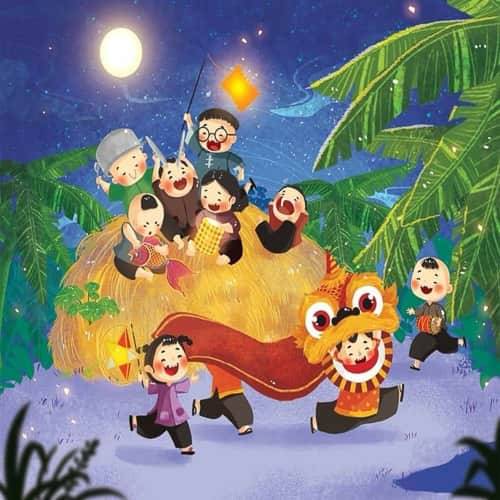



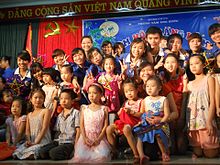


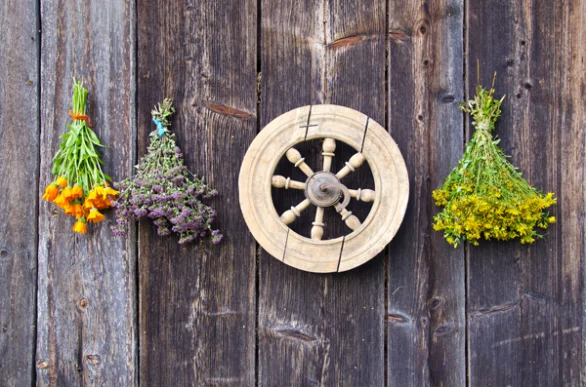
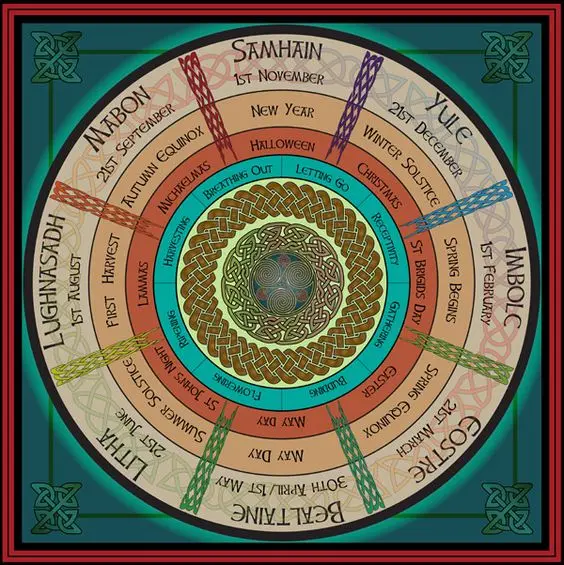
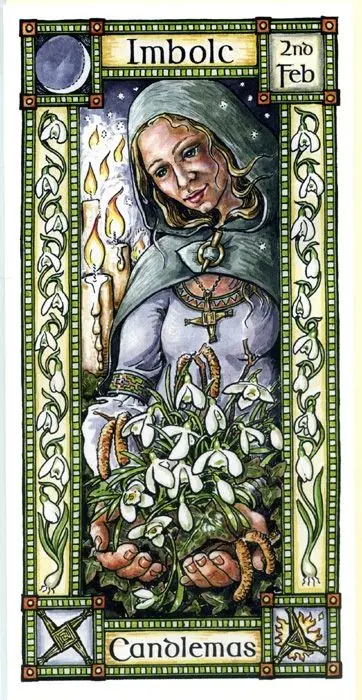
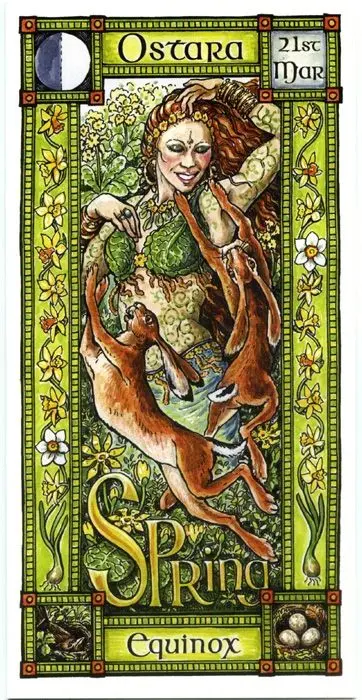












 Календарь праздников на 2013 год
Календарь праздников на 2013 год  Пятнадцатого января по лунному календарю отмечается
Пятнадцатого января по лунному календарю отмечается  Посещение могил предков примерно 5 апреля называется
Посещение могил предков примерно 5 апреля называется  Почитание памяти патриотических предков отмечается 5 мая по лунному календарю и называется
Почитание памяти патриотических предков отмечается 5 мая по лунному календарю и называется  Международный день трудящихся называется
Международный день трудящихся называется  Вечер седьмого июля по лунному календарю называется
Вечер седьмого июля по лунному календарю называется 
 На
На
 Первый – восходить на горы, в это время царит золотая погожая осень, вокруг живописные пейзажи – действительно прекрасный сезон для путешествий, которые одновременно и удовлетворяют интересы, и приносят пользу здоровью. Второй – сажать кизил, что помогает прогнать приносящих вред осенних комаров. Третий – пить вино и любоваться хризантемами. Сентябрь по лунному календарю – это время расцвета хризантем, любоваться тысячами, десятками тысяч разнообразных видов осенних хризантем, попивая вино из их лепестков – одна из радостей праздника «Чунъянцзе». Четвертый – кушать праздничный кекс. Люди готовят белые, нежные, приятные на вкус кексы из рисовой муки, называемые «Чунъянгао», «гао» звучит так же, как и слово «гао» — «высокий», «выше», и имеет значение «шаг за шагом продвигаться по служебной лестнице». Пятый – проводить мероприятия по почитанию пожилых людей. Эта традиция непрерывно тянется с давних времен до сегодняшнего дня.
Первый – восходить на горы, в это время царит золотая погожая осень, вокруг живописные пейзажи – действительно прекрасный сезон для путешествий, которые одновременно и удовлетворяют интересы, и приносят пользу здоровью. Второй – сажать кизил, что помогает прогнать приносящих вред осенних комаров. Третий – пить вино и любоваться хризантемами. Сентябрь по лунному календарю – это время расцвета хризантем, любоваться тысячами, десятками тысяч разнообразных видов осенних хризантем, попивая вино из их лепестков – одна из радостей праздника «Чунъянцзе». Четвертый – кушать праздничный кекс. Люди готовят белые, нежные, приятные на вкус кексы из рисовой муки, называемые «Чунъянгао», «гао» звучит так же, как и слово «гао» — «высокий», «выше», и имеет значение «шаг за шагом продвигаться по служебной лестнице». Пятый – проводить мероприятия по почитанию пожилых людей. Эта традиция непрерывно тянется с давних времен до сегодняшнего дня. 8 декабря по лунному календарю празднуется
8 декабря по лунному календарю празднуется